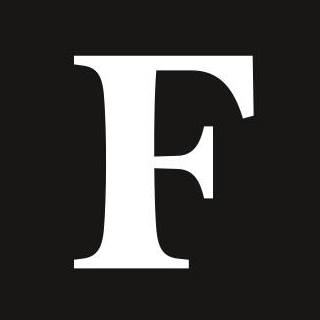


Topline
Fabergé, the jeweler most known for its famously intricate Russian Easter eggs, has been sold for $50 million by a British mining company to an American tech investor who says he plans to expand its international presence.
Gemfields, a colored gemstone miner listed on the London stock exchange, sold the fabled brand to tech entrepreneur Sergei Mosunov’s U.S. company SMG Capital.
Gemfields will receive $45 million when the deal closes later this month, and the remaining $5 million through quarterly royalty payments.
The company said it will use the money from the sale to help fund its mining operations for rubies in Mozambique and emeralds in Zambia.
Sean Gilbertson, the chief executive of Gemfields, said the company would miss the "marketing leverage and star power" that came from owning Fabergé, despite the fact the brand has struggled in recent years amid a downturn in the luxury goods market.
Fabergé has been one of the most renowned jewelers in the world for almost 200 years but has seen revenue fall in recent years—it reported revenues of $13.4 million in 2024, down from $15.7 million the previous year and $17.6 million in 2022.
Get Forbes Breaking News Text Alerts: We’re launching text message alerts so you'll always know the biggest stories shaping the day’s headlines. Text “Alerts” to (201) 335-0739 or sign up here: joinsubtext.com/forbes.
“Fabergé’s unique heritage, with ties to Russia, England, France and the USA, opens significant opportunities for further strengthening its position in the global luxury market and expanding its international presence,” Mosunov, a Russian national based in the U.K., said in a statement. “We feel a deep sense of responsibility and incredible inspiration for the work ahead."
The House of Fabergé jewelry company was founded in 1842 in St. Petersburg, Russia, by Gustav Fabergé. His son, Peter Carl Fabergé, was commissioned by Emperor Alexander III in 1885 to create an extravagant Easter gift for his wife, Empress Maria Feodorovna, and the famous Fabergé eggs were born. Known as "First Hen," the original product is made of gold and coated with white enamel, with a gold hen set with ruby eyes hidden inside. The emperor continued to have them made each year, reportedly giving Fabergé complete creative freedom, and 50 were ultimately made for the Russian Imperial Family, known as the "Imperial Eggs." Nineteen other eggs were made for the aristocracy and other elites. When the Romanov family fell during the Russian Revolution of 1917, the 50 Imperial Eggs were scattered all over the world, and some remain lost to this day. The eggs were crafted from gold or silver and encrusted with diamonds, rubies, emeralds, sapphires and other precious stones. They often included hidden items inside, like a miniature Trans-Siberian Railway train made of gold or a tiny, working replica of the Imperial coach used in Nicholas II's coronation. Today, Fabergé makes fine jewelry and egg objects inspired by the original eggs. They’re priced starting at $60,000.
- That's how many Imperial Easter Eggs are still missing. Eight were missing until 2014, when a buyer at a Midwestern flea market bought one for about $14,000. Kieran McCarthy, a London antiques dealer, told PBS News an anonymous buyer purchased the egg with hopes of making a small profit reselling it for its gold content. It was then authenticated as one of the real eggs. It features a Vacheron Constantin watch and sits atop a jeweled gold stand.
The most expensive egg is known as the Third Imperial Easter Egg, which was made in 1887. It has a solid gold case covered in sapphires and diamonds and houses a women's watch with diamond-set gold hands. It was once valued at $33 million and is owned by an anonymous private collector.
Billionaire Russian businessman Viktor Vekselberg owns 15 Fabergé Easter Eggs, making him the largest private collector in the world. Vekselberg bought nine Imperial Eggs from the Forbes media family, at the time the world's largest private collection, in 2004 for just over $100 million. He also owns two Kelch, eggs made for Russian nobleman Alexander Ferdinandovich Kelch, and four other eggs. At the time of his purchase from the Forbes family, he said the collection represented “perhaps the most significant example of our cultural heritage outside Russia. This is a once-in-a-lifetime chance to give back to my country one of its most revered treasures." Vekselberg’s eggs are on display at the Fabergé Museum in St. Petersburg. The British royal family also owns three Imperial Eggs, originally purchased by King George V and Queen Mary, King Charles's great-grandparents.
Vekselberg is worth an estimated $9.4 million as of Monday, making him the 328th-richest person in the world. He is a Ukrainian-born aluminum baron who made his first million selling scrap copper from worn-out cables and later turned several medium-size aluminum smelters and bauxite mines into Sual Holding in 1996. He later made his fortune in oil. His $120 million superyacht, Tango, was seized by Spanish police and the FBI in Palma de Mallorca in April 2022.



